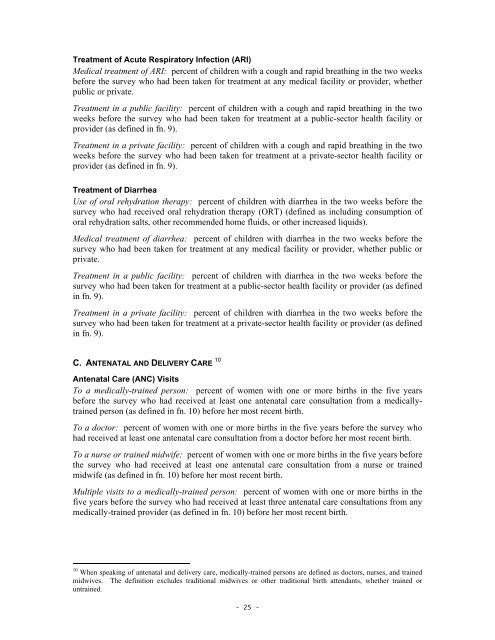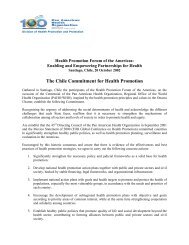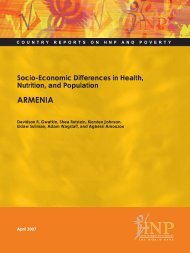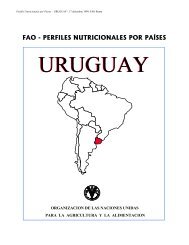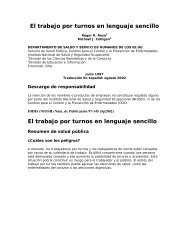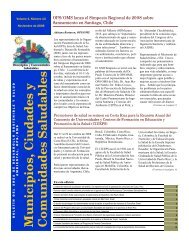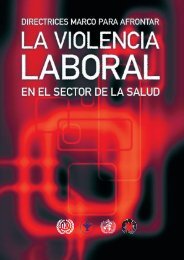Eritrea 1995. - BVSDE
Eritrea 1995. - BVSDE
Eritrea 1995. - BVSDE
- No tags were found...
Create successful ePaper yourself
Turn your PDF publications into a flip-book with our unique Google optimized e-Paper software.
Treatment of Acute Respiratory Infection (ARI)Medical treatment of ARI: percent of children with a cough and rapid breathing in the two weeksbefore the survey who had been taken for treatment at any medical facility or provider, whetherpublic or private.Treatment in a public facility: percent of children with a cough and rapid breathing in the twoweeks before the survey who had been taken for treatment at a public-sector health facility orprovider (as defined in fn. 9).Treatment in a private facility: percent of children with a cough and rapid breathing in the twoweeks before the survey who had been taken for treatment at a private-sector health facility orprovider (as defined in fn. 9).Treatment of DiarrheaUse of oral rehydration therapy: percent of children with diarrhea in the two weeks before thesurvey who had received oral rehydration therapy (ORT) (defined as including consumption oforal rehydration salts, other recommended home fluids, or other increased liquids).Medical treatment of diarrhea: percent of children with diarrhea in the two weeks before thesurvey who had been taken for treatment at any medical facility or provider, whether public orprivate.Treatment in a public facility: percent of children with diarrhea in the two weeks before thesurvey who had been taken for treatment at a public-sector health facility or provider (as definedin fn. 9).Treatment in a private facility: percent of children with diarrhea in the two weeks before thesurvey who had been taken for treatment at a private-sector health facility or provider (as definedin fn. 9).C. ANTENATAL AND DELIVERY CARE 10Antenatal Care (ANC) VisitsTo a medically-trained person: percent of women with one or more births in the five yearsbefore the survey who had received at least one antenatal care consultation from a medicallytrainedperson (as defined in fn. 10) before her most recent birth.To a doctor: percent of women with one or more births in the five years before the survey whohad received at least one antenatal care consultation from a doctor before her most recent birth.To a nurse or trained midwife: percent of women with one or more births in the five years beforethe survey who had received at least one antenatal care consultation from a nurse or trainedmidwife (as defined in fn. 10) before her most recent birth.Multiple visits to a medically-trained person: percent of women with one or more births in thefive years before the survey who had received at least three antenatal care consultations from anymedically-trained provider (as defined in fn. 10) before her most recent birth.10 When speaking of antenatal and delivery care, medically-trained persons are defined as doctors, nurses, and trainedmidwives. The definition excludes traditional midwives or other traditional birth attendants, whether trained oruntrained.- 25 -


